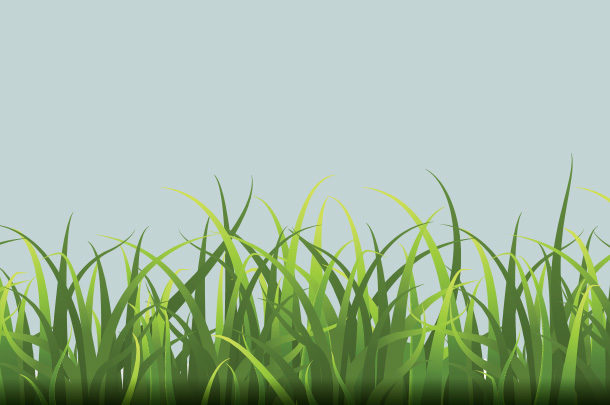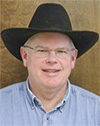Grazing management affects animal performance and both short-term and long-term pasture productivity. Grazing management includes decisions such as timing (when pastures are grazed), intensity (forage removed) and duration (how long they are grazed). The timing, intensity and duration of grazing greatly affect productivity of both plants and animals.
1. Timing
Timing is important from the plant perspective, as plants need sufficient time to grow and develop or replenish plant energy reserves prior to each grazing event. In rangeland settings, changing the timing of grazing each year can prevent defoliation during the same stages of plant growth. This is especially important for cool-season plants during early spring, when plants are relying on energy reserves to initiate growth, and late fall when plants need to store the energy that will be required to initiate growth the following spring.
Timing is also important in sensitive areas. Grazing of riparian areas should only occur when streambanks are firm and stable. During early spring runoff, riparian areas are often saturated and soft, making them very susceptible to damage. Additionally, the duration (discussed later) of the grazing period is critical for sensitive areas. Short grazing periods are key to protecting sensitive areas.
2. Intensity
Intensity includes a discussion of how much forage is removed and, even more importantly, how much forage is left behind. This residual (forage left behind) affects everything in the pasture. Residual is the living plant material remaining after a grazing event. Residual is often confused with residue, which is the dead plant material on the soil surface. Grazing intensity is often influenced by the number of livestock over a certain area and the amount of time the animals are in that area. It can be very appropriate to graze with high stock density if the duration of the grazing period is short.
Cattle productivity can be greatly influenced by grazing intensity. When grazing intensity is high and forage availability is limited, weight gains and milk production can suffer. One of the biggest factors affecting forage intake is availability. Cattle grazing taller plants are able to take in more forage with each bite, fill up faster and perform better. Pastures with shorter plants will have reduced intake and reduced performance.
Cattle typically spend their time equally divided among grazing, ruminating and resting. With excellent forage conditions, they can meet their physiological (maintenance) needs in as little as four hours of grazing. In poor pasture conditions, they may extend their grazing time to about 10 hours. Because of the need for rumination and rest, it is essentially impossible to graze longer – even if they have not yet met their maintenance requirements.
Low performance is commonly seen when cattle spend most or all the grazing season in one pasture, even though it may be very large. While the pasture may be green all summer, short grass and low forage availability might limit animal performance to 1 pound or less of average daily gain (ADG). An additional scenario in my part of southwest Idaho occurs with some targeted grazing to reduce fire risk along the Owyhee Front. Cattle are used as a tool during the early spring to graze cheatgrass along specific corridors. The goal is to graze the cheatgrass to less than 2 inches. This is very helpful for reducing fire risk but requires careful management by cattle managers to maintain cow performance at acceptable levels.
From the forage perspective, regrowth is affected by residual. Pasture plants need to photosynthesize to regrow efficiently. Photosynthesis takes place mainly in the leaves of the plant. When plants are grazed too short, they must rely on plant energy reserves and new buds to regrow. This process is less efficient and requires more time. In other words, grazing to a shorter residual will increase the length of the rest period needed for the pasture to recover and be ready for the next grazing. Leaving taller post-grazing residual will speed up the recovery process and increase pasture productivity.
Additionally, plant root growth is affected by grazing intensity. It seems almost every producer has heard the old adage of “take half, leave half” when managing grazing. Early research published in 1955 demonstrated that allowing defoliation up to 50% of the aboveground biomass has very little effect on plant roots. Taking more than 50%, however, can severely impact root growth, thus reducing the plants’ ability to absorb water and nutrients from the soil.
3. Duration
The duration or length of the grazing period affects animal and plant productivity. Animals are selective grazers. They tend to eat the most-preferred plant species first, followed by consumption of the second-most-preferred species and so on. Over time, this can lead to the most-preferred species being grazed out of the pasture. As preferred species are grazed out, they are typically replaced with less-productive species that can better tolerate frequently repeated defoliation. This is especially true in continuously grazed pastures. Ideally, the duration of the grazing period should be as short as possible. In irrigated pastures, this is likely less than three days.
Stock density is a powerful tool to reduce or eliminate selective grazing. With high stock density, animals tend to focus more on competing with their neighbor for available resources rather than searching for their favorite plant preferences. High stock density coupled with short grazing periods and adequate rest/recovery periods for pastures are excellent tools and practices to improve pasture condition and production.
When management is intensified to better control timing, intensity and duration of grazing, both animal performance and pasture productivity can be improved. If you would like to hone your grazing management knowledge and skill, I invite you to attend the University of Idaho Extension’s Lost River Grazing Academy that will be held in September 2022. This weeklong course will give you hands-on experience in grazing management in a production ranch setting. Please contact me for additional information.








